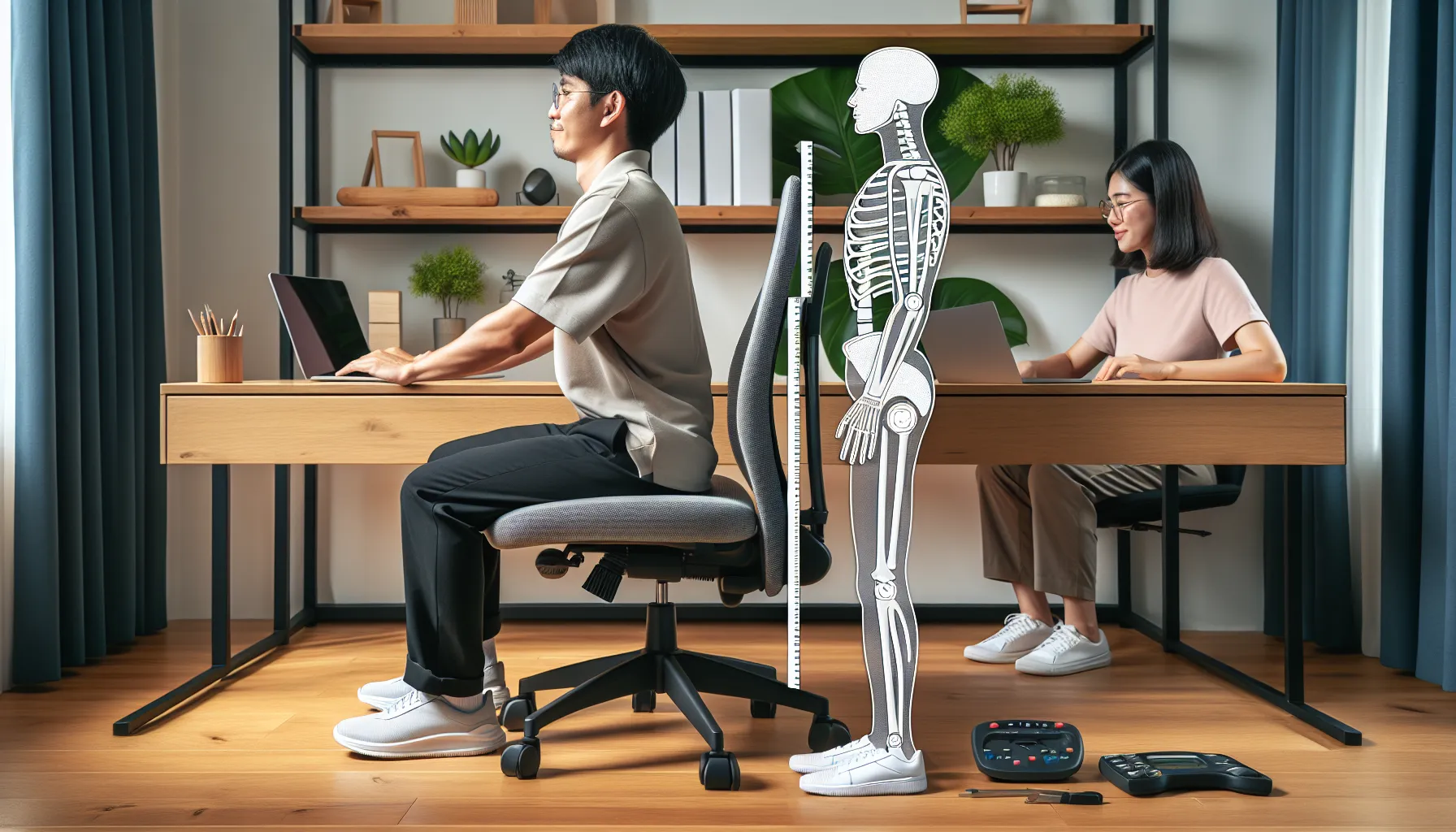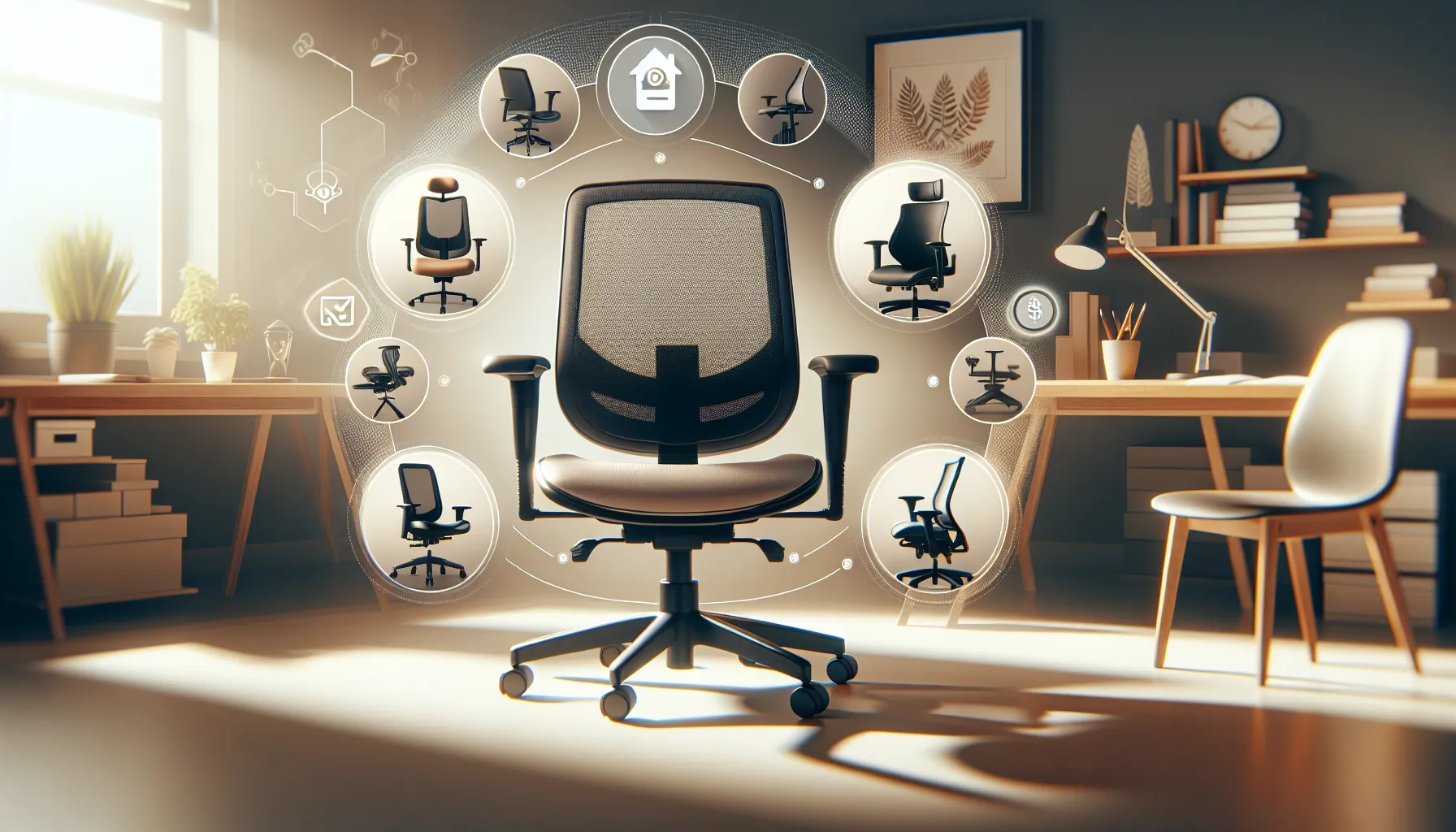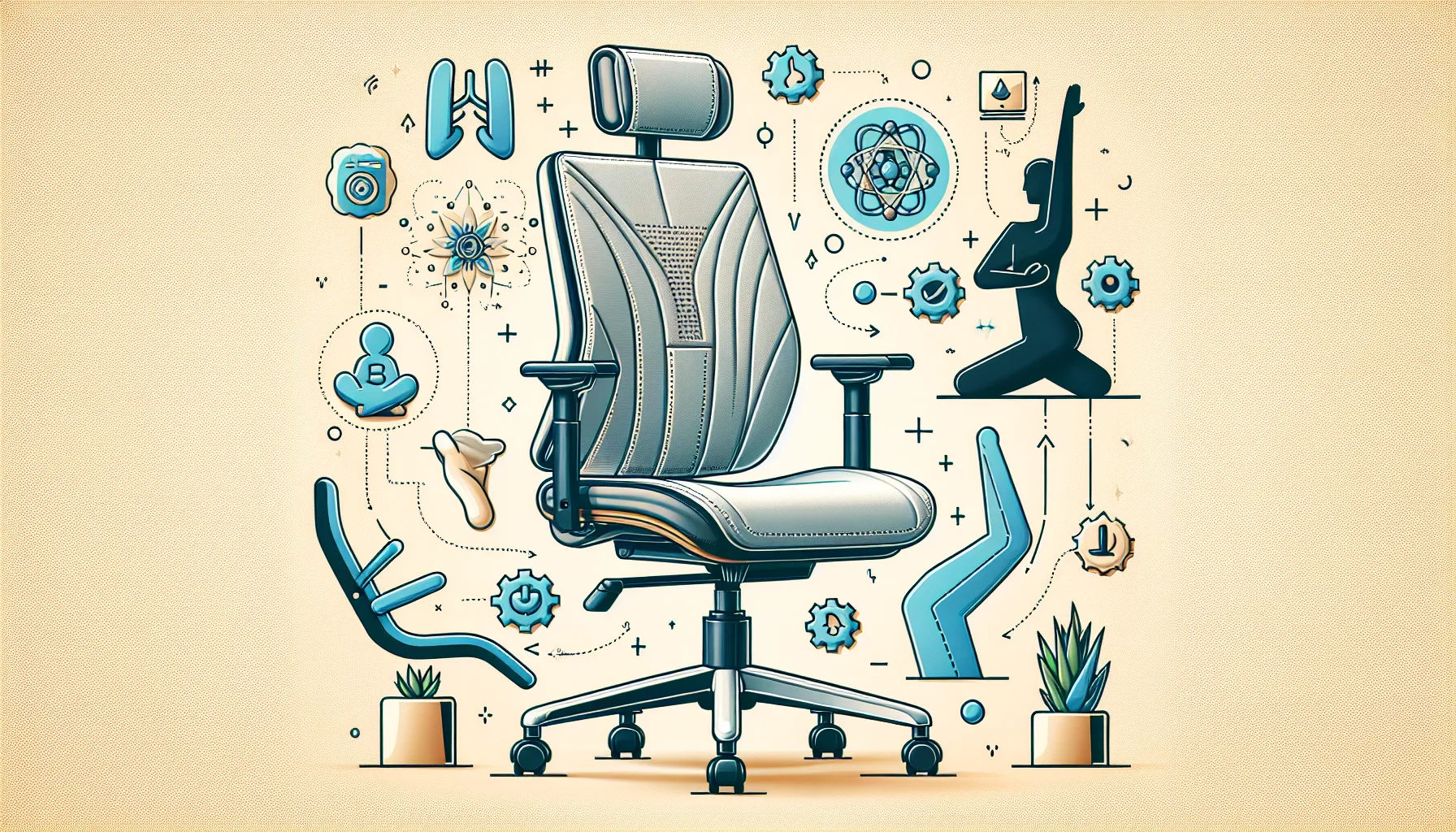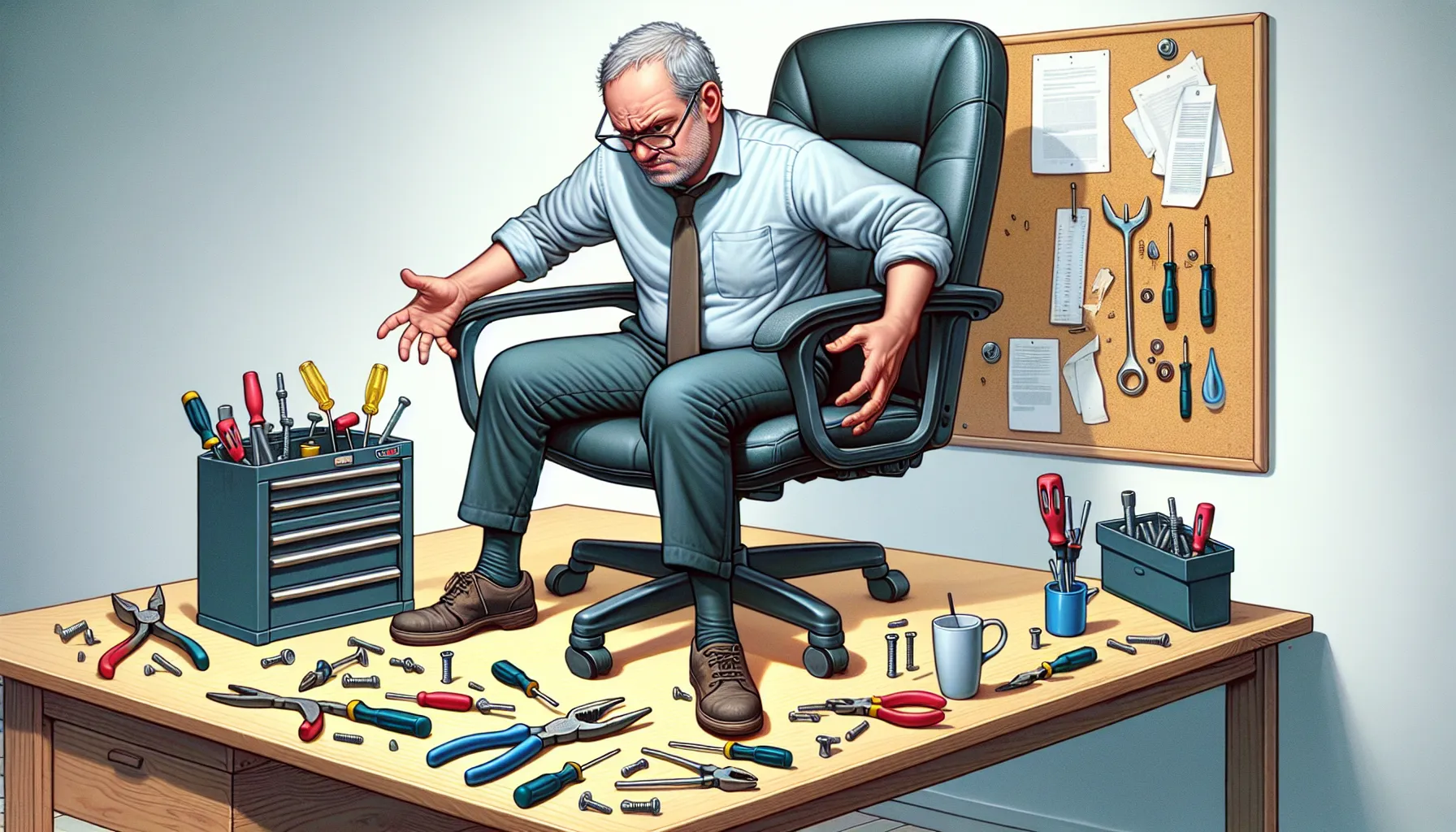

Achieving the correct desk chair height is crucial for improving posture, productivity, and ergonomic health, guiding readers through practical steps to measure, adjust, and enhance their seating arrangements, alongside success stories demonstrating the transformative impact on well-being.
Have you ever sat in a desk chair and felt like it was either too tall or too short for you? Getting the height of your desk chair right is super important. If your chair is not at the right height, you could end up feeling really uncomfortable or even hurt yourself over time. That’s because sitting in a weird position for too long can mess with your back, neck, and shoulders. But don’t worry, figuring out the perfect desk chair height isn’t as hard as it sounds, and we’re here to help you with it.
In this blog post, we’re going to talk about everything you need to know to make sure your chair is at the perfect height for you. We’ll cover why chair height is important, how to adjust your chair, and some tips to make sure you’re sitting comfortably at your desk all day long. So, whether you’re studying, working, or just spending a lot of time at your desk, keep reading to find out how to make your desk chair work best for you.

Desk chair height is how tall your chair is when you are sitting at your desk. It’s important because if your chair is too high or too low, it can make you uncomfortable and even hurt your body after sitting for a long time. Imagine riding a bike that’s either too big or too small for you. It wouldn’t feel right, right? That’s the same thing with desk chairs!
Most of the time, experts say your chair should be at a height where your feet can rest flat on the ground. Your legs should make an angle of about 90 degrees at the knees. This means when you sit, your thighs are parallel to the ground, and your knees are the same height as your hips. If your chair can adjust, start by sitting and then move the chair up or down until it feels just right. If you can’t adjust your chair, you might need to use a footrest or a cushion to make sure you’re sitting comfortably and properly. It’s like finding the perfect spot on the couch for watching TV or playing video games!
Have you ever thought about how important the height of your desk chair is? It might seem like a small detail, but it actually has a big impact on how you sit, how you feel, and even how well you work. Let’s dive into why finding the right chair height is more than just about being comfortable.
First off, the height of your chair can really change the way you sit. If your chair is too low or too high, you might find yourself slouching or stretching in weird ways just to feel okay at your desk. This can lead to bad posture over time. But, when your chair is just right, your feet can stay flat on the ground, and your knees can bend at a comfortable angle. This helps you keep your back straight and your shoulders relaxed, which is much better for your posture.
Believe it or not, the height of your chair can also affect how much you get done. When you’re comfortable, you can focus better and work longer without feeling tired or distracted by discomfort. A chair that’s at the right height helps keep your body in a good position so you can concentrate on your tasks. Plus, when you’re not wasting time trying to get comfortable, you can spend more time actually working.
Last but not least, the right desk chair height is super important for what experts call ‘ergonomic health.’ This is just a fancy way of saying keeping your body safe and healthy while you use it. When your chair is at the correct height, it helps prevent strain on your eyes, neck, back, and arms. That means you’re less likely to feel sore or get injuries from sitting in a bad position for too long. So, by adjusting your chair to the right height, you’re not just more comfortable — you’re taking care of your body too.

Finding the perfect desk chair height is like finding the key to being super comfortable while you work or study. It’s not just about feeling good, but also about keeping your body happy and healthy. Let’s dive into how you can figure out the best chair height for you!
First things first, sit down in your chair close to your desk. Your feet should be flat on the ground, and your knees should make an angle that’s about the same as when you make a “L” with your arm. That’s the 90-degree angle. Your arms should also be able to rest comfortably on your desk without having to lift your shoulders up. If all of this works out, you’ve found your magic chair height! If not, no worries – most chairs let you adjust their height until you get it just right.
There are a few things you want to think about when figuring out your ideal chair height:
There are some handy tools and resources to help you get your desk chair height just right. A measuring tape can help you measure the distance from the ground to your knees and from your knees to where your arms comfortably rest on the desk. Some websites and apps let you plug in those numbers to recommend the best chair height for you. Also, don’t forget about adjustable chairs that let you fine-tune your chair height easily whenever you need to. Chatting with someone who knows a lot about ergonomics, which is the science of designing things so that they’re comfortable and efficient to use, can also give you great tips.
Getting your desk chair to the right height is important to feel comfortable and keep your body happy while you work or study. Here is how you can do it:
If your chair has a lever, it’s really easy to adjust by pushing it up or down while you are sitting. Some chairs twist to go up or down, so you’ll have to stand up to adjust these.
Not all chairs can be adjusted easily, but you can still make yourself comfortable. Here’s how:
Remember, it’s all about making sure you’re not straining your neck, back, or shoulders while you’re sitting. Take breaks and move around every once in a while to keep your body happy!
| Chair Type | Adjustability | Recommended Height |
|---|---|---|
| Swivel Chair with Adjustable Features | Seat height, backrest height, armrest height | Seat height should allow for feet flat on the floor and thighs parallel to the ground |
| Fixed-height Chair | No adjustable features | Seat height should allow for feet flat on the floor and thighs parallel to the ground |
If your feet can’t touch the ground even after adjusting your chair, don’t worry! Footrests can be super helpful. They support your feet so you can sit comfortably without your legs hanging. Plus, they help keep your posture right, which is very important for not getting sore after sitting for a long time.
Adjusting your chair height might make you need to change other things on your desk. For example, if you raise your chair, your computer screen might be too low. You can put your screen on books or a stand so it’s at the right level. This helps you look straight ahead instead of down, which is much better for your neck. And make sure your keyboard and mouse are easy to use without reaching too far. Your workspace should make you feel good and help you do your best work without hurting your back or eyes.

If your chair can’t be adjusted to the perfect height, don’t worry! You can still make things comfortable. If the chair is too low, try adding a cushion to raise your sitting height. If it’s too high, consider using a footrest to support your feet. Both solutions help keep your posture right and you comfortable.
It’s a good idea to check your desk chair height every few months. Our bodies change, and what was comfortable a few months ago might not be now. Also, if you switch desks or get a new chair, you’ll want to make sure the height is still good for you. Keeping an eye on it helps you stay comfy and healthy.
Yes, the height of your desk chair can definitely affect how you see your screen. If your chair is too high or too low, you might have to tilt your head too much, which can strain your neck and eyes. Adjusting your chair so your eyes line up with the top third of your screen is a good way to reduce strain and keep your eyes feeling good.
Using a chair that is not at the ideal height can lead to discomfort, poor posture, and even long-term musculoskeletal issues.
The ideal height for your desk chair is when your feet are flat on the floor, your thighs are parallel to the ground, and your arms are even with the desk surface.
Yes, it’s important to reevaluate and adjust your desk chair height periodically as your body and comfort needs may change over time.
Many people have discovered the huge difference that adjusting their desk chair height can make. For example, Sarah, a graphic designer, used to struggle with back pain after long hours at her desk. After learning the correct way to adjust her chair height, her back pain significantly decreased. She mentioned, “I never realized how much of a difference it could make. I feel like I can work longer without any discomfort now.” This simple change helped her enjoy her work more and be more productive.
Another story comes from Mike, a software developer, who adjusted his chair height and noticed an immediate improvement in his focus and decrease in wrist pain. Before making the adjustment, Mike often found himself fidgeting and taking frequent breaks due to discomfort. After finding the right chair height, he said, “My days are so much better. I can concentrate more on my coding without constantly shifting to find a comfortable position.” His story highlights how the right desk setup not only reduces pain but can also lead to better work output.
These real-life examples show that something as simple as adjusting your desk chair height can have a big impact on comfort, health, and productivity. Whether it’s reducing pain or improving focus, the right chair height can make a significant difference in your work life.
As someone who spends long hours at my desk, I never really thought much about the height of my chair. Sure, I adjusted it every now and then for comfort, but I never realized the significant impact it could have on my comfort and productivity until recently.
One day, I attended a webinar on ergonomics, and the speaker emphasized the importance of proper desk chair height. I decided to give it a try and adjusted my chair according to the guidelines provided.
To my surprise, the difference was remarkable. Not only did I feel more comfortable, but my posture also improved. I no longer experienced the usual mid-afternoon back pain, and I found myself more focused on my tasks. Small adjustments in my chair’s height had led to significant improvements in my daily work life.
It may sound simple, but the impact of adjusting my desk chair height has been nothing short of transformative. It just goes to show that sometimes, the smallest changes can make the biggest difference.
So, what have we learned about the right height for your desk chair? It’s more than just about feeling comfy while you sit. It’s about keeping your body happy and healthy. Let’s go over the big points again:
First, having your chair at the right height can help prevent aches and pains, especially in your back and neck. That’s because when your chair is at the perfect height, your feet can rest flat on the ground, and your arms can easily reach your desk without straining.
Next, it keeps your posture in check. No slouching or stretching too far means your spine stays in a good shape, which is super important. And remember, good posture means less pain and more energy.
Lastly, setting up your chair just for you can make a big difference in how you feel and work. Everyone’s body is different, so what works for one person might not work for you. It’s all about making small changes until everything feels just right.
Now, take this as a gentle nudge to give your desk chair height a little tweak. Play around with it. Lift it up, bring it down, until you find that sweet spot where you feel both comfy and in good shape. Not only will your body thank you, but you might just see a boost in your mood and work performance too. After all, when you’re comfortable and pain-free, it’s easier to focus on being awesome at whatever you do.







